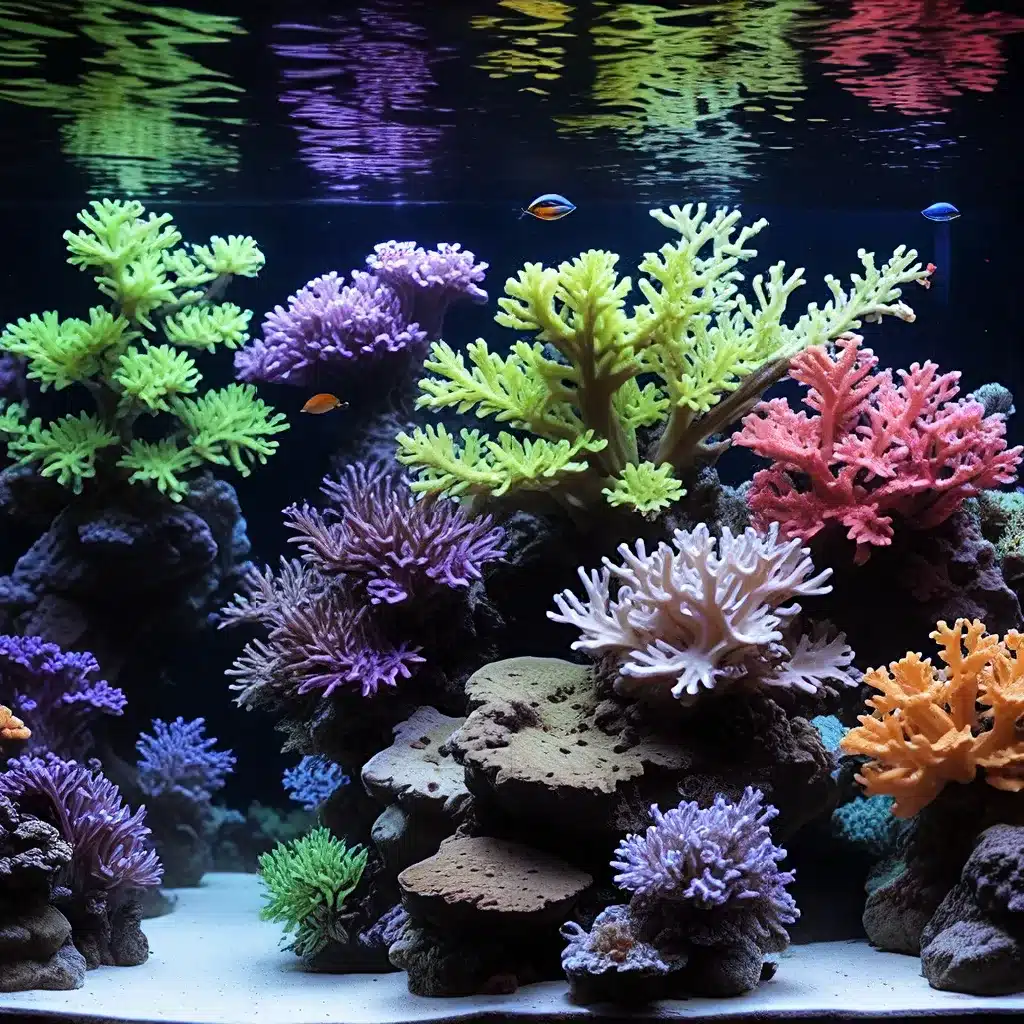
Maintaining a thriving reef tank is a delicate balance of water chemistry, nutrient management, and lighting. Proper aquarium lighting is a crucial factor in promoting healthy coral growth and vibrant underwater ecosystems. In this comprehensive guide, we’ll explore the nuances of reef tank lighting, discussing the optimal light spectrum and intensity required for your corals to thrive.
Understanding the Importance of Lighting for Reef Tanks
Corals and other marine life in a reef tank have specific lighting requirements that differ from those of freshwater plants and fish. Corals, being photosynthetic organisms, rely on appropriate lighting to fuel their metabolic processes and maintain their vibrant coloration.
The intensity and spectrum of the light in your reef tank directly impact the growth, health, and appearance of your corals. Insufficient or imbalanced lighting can lead to poor coral growth, bleaching, and even death. Conversely, optimal lighting can foster a lush, thriving underwater ecosystem that is a joy to behold.
Choosing the Right Lighting Technology for Your Reef Tank
When it comes to reef tank lighting, there are several technologies to consider, each with its own advantages and drawbacks. The most common options include LED, T5 fluorescent, and metal halide lighting.
When selecting lighting for your reef tank, it’s important to consider factors such as tank size, coral species, and your budget. Many hobbyists opt for a combination of lighting technologies to achieve the optimal spectrum and coverage for their specific setup.
Achieving the Perfect Light Spectrum for Coral Growth
The light spectrum is a crucial factor in determining the health and growth of your corals. Different coral species have varying light requirements, with some preferring a higher blue-violet spectrum, while others thrive under a broader, more balanced light.
Research has shown that blue and violet light are particularly important for coral photosynthesis and pigment production, which contribute to their vibrant colors. However, corals also require other wavelengths of the visible spectrum, such as red and green, to maintain a balanced and healthy growth.
To achieve the perfect light spectrum for your reef tank, consider LED lighting with adjustable color channels. This allows you to fine-tune the intensity and combination of different wavelengths to cater to the specific needs of your coral species. Additionally, supplementary lighting, such as T5 fluorescent or metal halide, can be used to enhance the overall spectrum and provide a more natural, balanced lighting environment.
Optimizing Light Intensity for Coral Health
In addition to the light spectrum, the intensity of the light in your reef tank is equally critical. Corals require a specific range of light intensity to thrive, and both too much and too little light can have detrimental effects.
Research has shown that high-intensity lighting can lead to coral bleaching, while low-intensity lighting can result in reduced growth and poor coloration. Finding the right balance is crucial for maintaining a healthy, vibrant reef tank.
To optimize the light intensity in your reef tank, consider the depth and layout of your aquarium, as well as the placement and wattage of your lighting fixtures. Use a light meter to measure the light levels at different points in the tank and make adjustments as needed to ensure an even distribution of appropriate light intensity throughout the entire aquarium.
Balancing Blue and White Light for Coral Coloration
While blue light is essential for coral photosynthesis and pigment production, a balanced spectrum that includes white light is also important for maintaining vibrant coral coloration.
Studies have shown that a combination of blue and white light can result in more intense coral colors compared to blue light alone. The white light helps to enhance the contrast and bring out the natural hues of the corals, creating a visually stunning underwater landscape.
When setting up your reef tank lighting, experiment with different ratios of blue and white light to find the optimal balance that brings out the best in your coral species. This may require adjusting the intensities of your blue and white LED channels or incorporating both LED and T5 fluorescent lighting in your setup.
Incorporating Lighting Automation and Timing
To further optimize the lighting conditions in your reef tank, consider automating your lighting system and adjusting the lighting schedule to mimic the natural day-night cycles.
Many advanced lighting controllers and aquarium automation systems allow you to program the intensity and spectrum of your lighting fixtures to change throughout the day, simulating the natural progression of sunrise, midday, and sunset. This can help to reduce stress on your corals and other marine life, while also enhancing the overall aesthetic appeal of your reef tank.
By carefully managing your lighting schedule, you can ensure that your corals receive the appropriate amount of light at the right time, supporting their natural growth cycles and promoting a healthy, thriving ecosystem.
Conclusion
Achieving the perfect aquarium lighting for your reef tank is a critical aspect of maintaining a healthy, vibrant underwater environment. By understanding the importance of light spectrum and intensity, as well as incorporating automation and timing, you can create the ideal conditions for your corals to thrive and your reef tank to flourish.
Remember, the key to successful reef keeping lies in understanding and meeting the specific needs of your corals, and lighting is a fundamental component of that equation. With the right lighting setup, you can unlock the true potential of your reef tank and enjoy the breathtaking beauty of a thriving underwater oasis.

